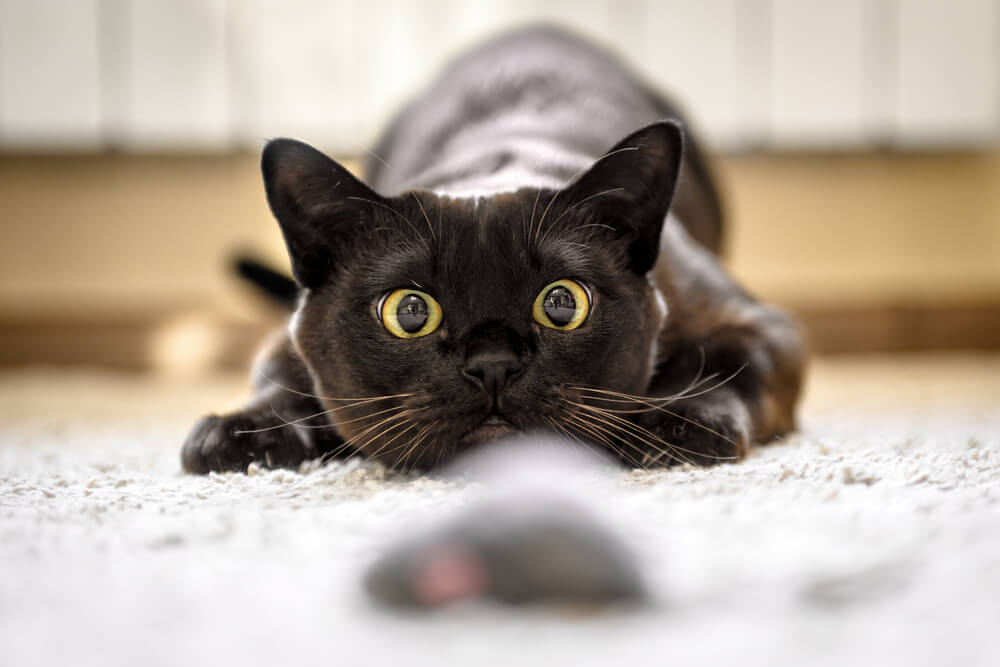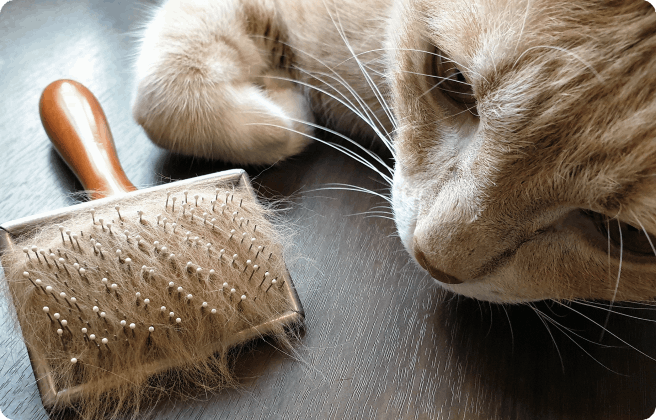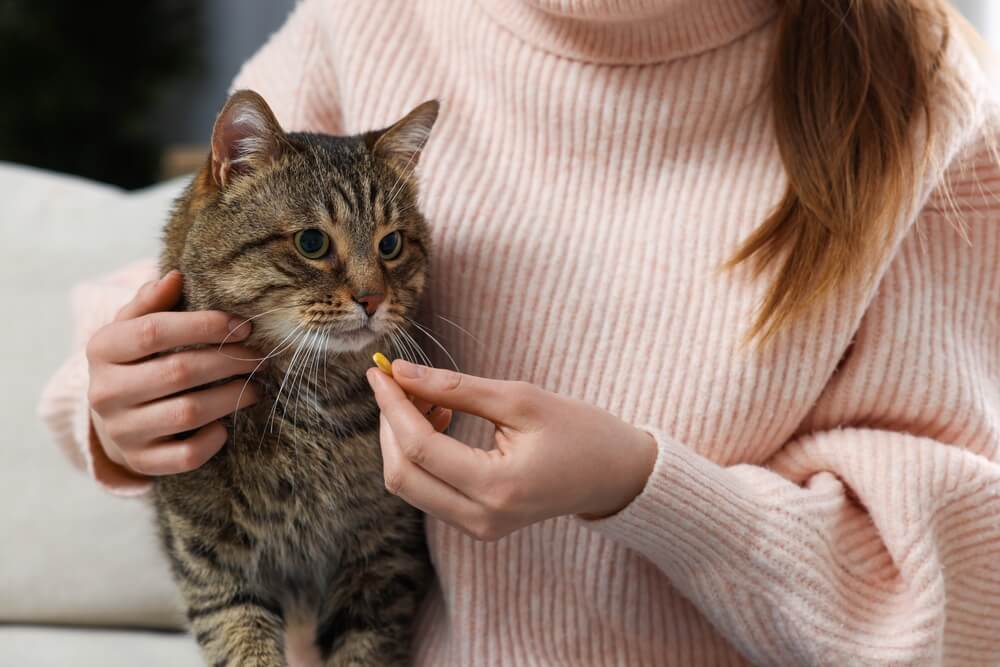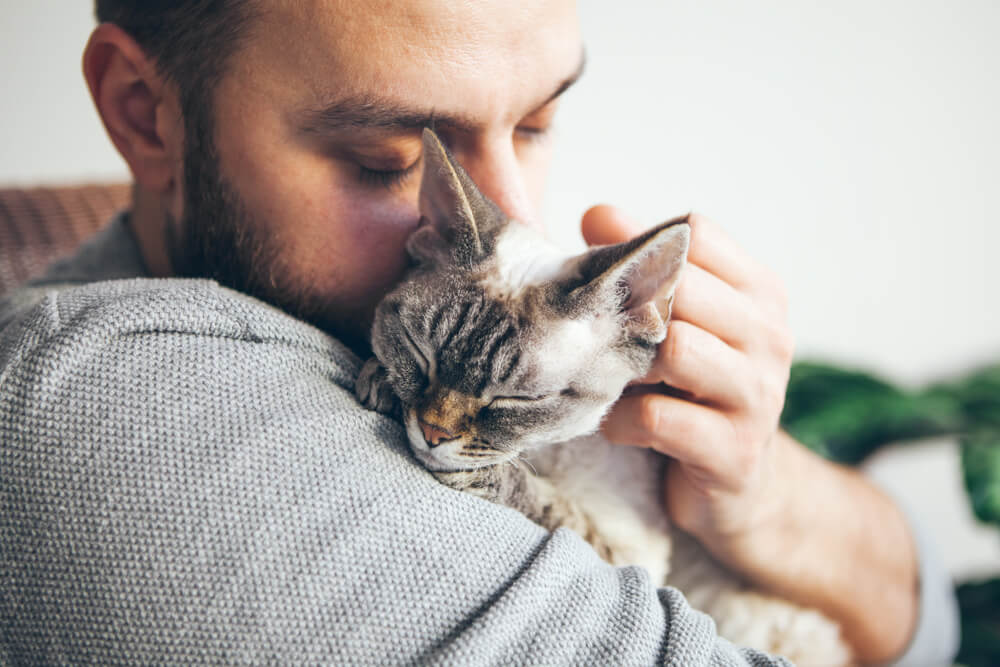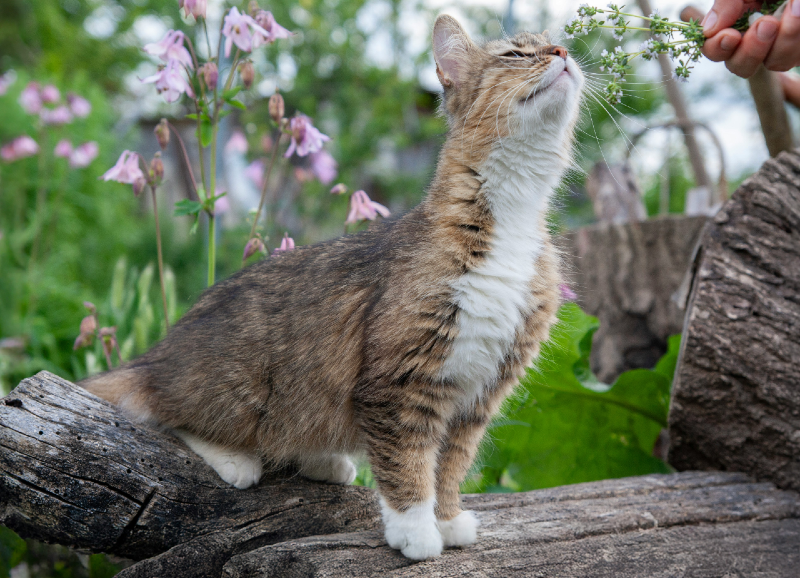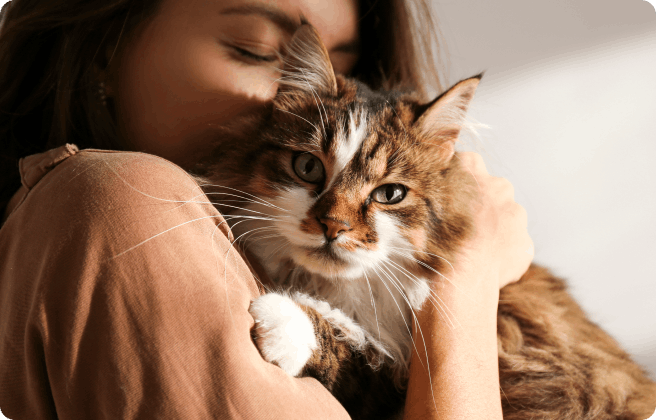
If you’re looking for a pet to guard your home or stand between you and danger, you probably wouldn’t think of a cat. Cats are often stereotyped as aloof, independent, and too mysterious to form strong protective bonds. And yet, many cat parents can tell you stories of their feline friends leaping into action when they sense danger.
In reality, cats can be incredibly loyal to their families and, in their own unique way, may act as protectors. In fact, a 2011 study revealed that cat-human relationships are nearly identical to human-only bonds. Cats do form deep emotional connections with their parents, even if they express their love differently from dogs.
But do cats consciously think, I need to protect my human? Probably not. While cats are intelligent creatures, they likely act more on instinct than intention. When a cat exhibits protective behavior, such as standing between you and a perceived threat, they’re following their natural instincts to respond to stimuli that seem unusual or threatening in their environment. Read below to find out more about your protective cat and what to do if it becomes a problem.
Why do cats protect you?
Cats may not consciously think they are protecting their parents, but their behavior often reflects their strong bond with you. In the wild, cats rely on their instincts to protect themselves and their families, and some of these instincts carry over to their relationships with humans.
How do you know if your cat is protecting you?
Cats use their body language to communicate their feelings and intentions. If your cat goes into “bodyguard mode,” there are a few signs to watch out for.
Body language of a protective cat
- Dilated eyes – Their pupils enlarge to take in more of their surroundings and assess the situation.
- Pointed ears – Cats swivel their ears toward potential threats, much like satellite dishes.
- Quick, sharp tail movements – A rapidly flicking tail can indicate agitation or heightened alertness.
- Crouched stance – Your cat may lower their body, ready to spring into action if necessary.
- Exposed teeth or claws – They might bare their teeth or unsheathe their claws as a warning.
- Vocalizations – Hissing, growling, or even screeching can be signs your cat feels protective or threatened.
- Physical actions – Biting, swiping, or scratching at the perceived threat are common responses.
How cats protect their pet parents
While you might not sense any danger, your cat could pick up on something you’ve missed. If their behavior seems unusual, they might be trying to communicate with you. Here are some common signs that your cat may be protecting you:
- Staying close to you – If your cats always position themselves near you in unfamiliar or tense situations, they may be monitoring the environment for potential threats.
- Intervening in conflicts – Cats have been known to step between their owners and perceived dangers, whether it’s another animal or a person they don’t trust.
- Puffed-up fur – When cats puff up their fur, it’s a classic “defensive mode” response, controlled by their nervous system to make them appear larger and more intimidating.
- Directing attention to a perceived threat – Cats may fix their gaze, hiss, or growl at something they consider suspicious, effectively alerting you to the issue.
Do cats guard the home?
Cats can protect their home in the same way they might protect humans. Typically, this means they will sound an audible alarm for their humans, but it can lead to cats being aggressive towards people visiting the house and potentially even intruders. The size of human visitors means that most cats will avoid direct confrontation with people, though.
How to handle an overprotective cat
While it’s heartwarming to think your cat might want to protect you, overprotective behavior can sometimes become problematic. Cats that are overly reactive may misinterpret harmless situations as threats, leading to stress for both of you. Here are some tips for managing an overprotective cat:
- Identify triggers – Pay attention to what sets your cat off. Is it strangers, loud noises, or certain animals? Understanding the root of their behavior is the first step.
- Create a safe environment – Provide plenty of hiding spots and quiet spaces where your cat can retreat to feel secure.
- Avoid reinforcing aggression – Refrain from rewarding protective behavior with excessive attention, as this can reinforce the idea that their response is necessary.
- Desensitize gradually – If specific triggers are manageable, work on slowly exposing your cat to them in a controlled and positive way.
- Consult a professional – If your cat’s behavior becomes extreme or stressful, consider consulting a vet or animal behaviorist for guidance.
Ultimately, while your cat’s idea of protection may not involve leaping into action like a dog, their watchful, instinct-driven behavior is a testament to how much they care. So, the next time your cat fixes their gaze on a stranger or hisses at an unfamiliar sound, take a moment to appreciate their unique way of showing they’ve got your back.
We uphold the highest editorial standards when creating the authoritative content pet parents rely on and trust.
Every piece of clinical content on the Cat Food Advisor is reviewed by our certified Veterinary Advisory Board, which consists of licensed veterinarians and medically certified specialists.
Our reviews are completely independent; we are not paid by any pet food company to promote their products favorably. We do not accept money, gifts, samples or other incentives in exchange for special consideration. For more information see our Disclaimer & Disclosure page.



